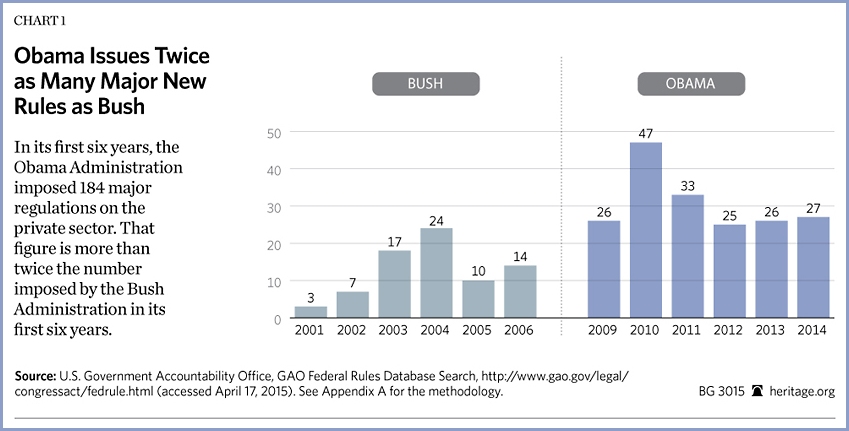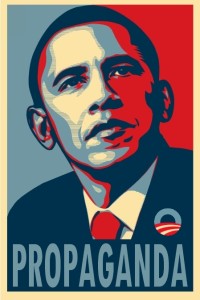Congress should:
Category Archives: Regulatory Costs
Reforming-Regulations-and-Agency-Oversight-from-2015-CEI-Agenda-for-Congress
‘Dirty Rotten Ethanol Scoundrels’ – Wall St. Journal
 A Wall Street Journal editorial notes that the EPA is reducing the amount of ethanol that must be blended into gasoline below the level required by the 2007 energy bill.
A Wall Street Journal editorial notes that the EPA is reducing the amount of ethanol that must be blended into gasoline below the level required by the 2007 energy bill.
Why? Because it’s impossible to meet the goal without diluting gasoline so badly that it will damage car engines because ethanol is corrosive. Requiring 10% (E-10) is bad enough, but mandating anything higher would “damage the engines and fuel systems of most of the cars and trucks on the road today . . . risking accidents, breakdowns and valve, pump, cylinder and injector replacements rarely covered by consumer warranties.”
But to placate corn farmers, the Agriculture Department pledged $100 million in state grants to help fix vehicles that use higher blends of ethanol. That’s more taxpayer money to fix the damage caused by taxpayer subsidies of ethanol.
The WSJ concludes: “Such is the corruption of corporate welfare, which continues for no reason other than that it already exists.”
Read more: Dirty Rotten Ethanol Scoundrels – WSJ
What difference does the number of regulations make?
 President Obama loves to say that he’s issued fewer regulations than George W. Bush did. Obama does that to distract and confuse people because it’s both true and extremely misleading. It’s the cost that counts — the economic impact — far more than the number of regulations.
President Obama loves to say that he’s issued fewer regulations than George W. Bush did. Obama does that to distract and confuse people because it’s both true and extremely misleading. It’s the cost that counts — the economic impact — far more than the number of regulations.
An illustration: One person may have twice as many coins as another person, but if they have four pennies and the other person has two quarters, then the smaller number of coins is clearly more significant.
Obama’s smaller number of regulations have a far bigger and more negative impact on our economy than Bush’s regulations did. As FactCheck.org noted early in 2012, “It’s true (barely) that Bush issued more new regulations than Obama at the same point in their presidencies — but Obama didn’t mention that his cost more.“
More from Competitive Enterprise Institute: https://cei.org/blog/obama-has-issued-more-economically-significant-rules-65-years-bush-did-eight
The big picture: Six years of red tape rising under Obama
Runaway regulations from the executive branch, aided by vast delegations of power issued by Congress–these are the trends that burden Americans, outlined in the 9th annual “Red Tape Rising” report by The Heritage Foundation.
Highlights of the report by Heritage scholars James Gattuso and Diane Katz include:
- The number and cost of government regulations kept climbing in 2014. 27 new major rules in 2014 pushed Obama’s six-year total to 184, “with scores of other rules in the pipeline.” These 184 alone have an annual cost of at least $80-billion
- “President Barack Obama has repeatedly demonstrated his willingness to act by regulatory fiat instead of executing laws as passed by Congress.”
- But “A great deal of the excessive regulation in the past six years is the result of Congress’ granting broad powers to agencies through passage of vast and vaguely worded legislation.”
- The result? “Intensifying Washington’s control over the economy and Americans’ lives.”
The full report: Red Tape Rising: Six Years of Escalating Regulation Under Obama
Propaganda secret: How Obama raises electric bills yet claims he lowers them
 In 2013, President Obama was given the “Lie of The Year” award for claiming that Obamacare would allow people to keep their current health insurance. Now a new statement might win Obama that award for 2014 as well: Obama claims that his new Environmental Protection Agency regulations will lower people’s electric bills.
In 2013, President Obama was given the “Lie of The Year” award for claiming that Obamacare would allow people to keep their current health insurance. Now a new statement might win Obama that award for 2014 as well: Obama claims that his new Environmental Protection Agency regulations will lower people’s electric bills.
On June 2, he stated, “Your electricity bills will shrink as these standards spur investment in energy efficiency, cutting waste and, ultimately, we’re going to be saving money for homes and for businesses.”
Yet in 2008 he admitted his agenda was to make electricity rates “skyrocket,” supposedly to save the planet. And the EPA’s own analysis predicts their regulations will raise electric rates an extra 6% to 24% by 2020.
Careful research reveals the carefully-contrived statements Obama is using to leave consumers a totally false impression about the impact of the new EPA regulations.
Read the secrets about the propaganda: Obama’s latest brainwashing whopper — lower electricity bills


